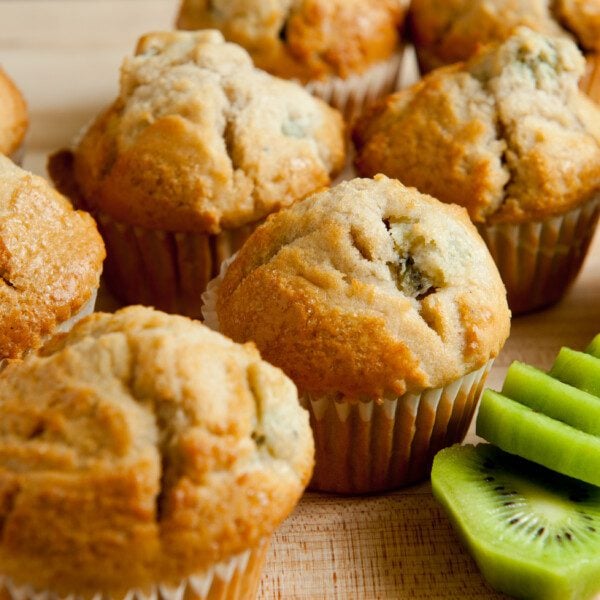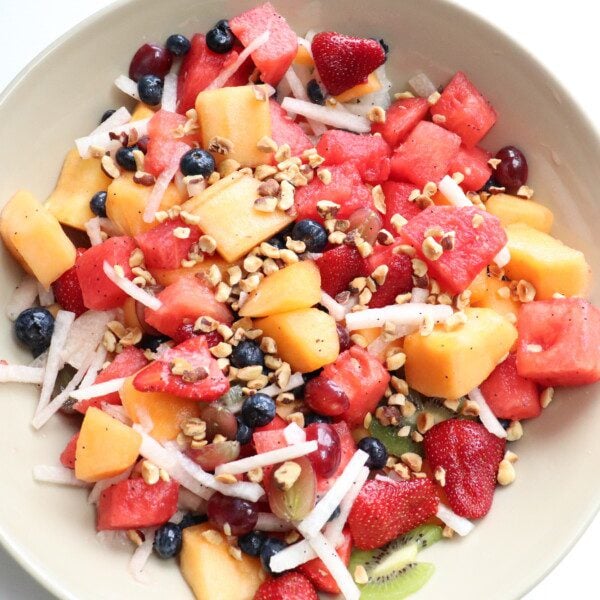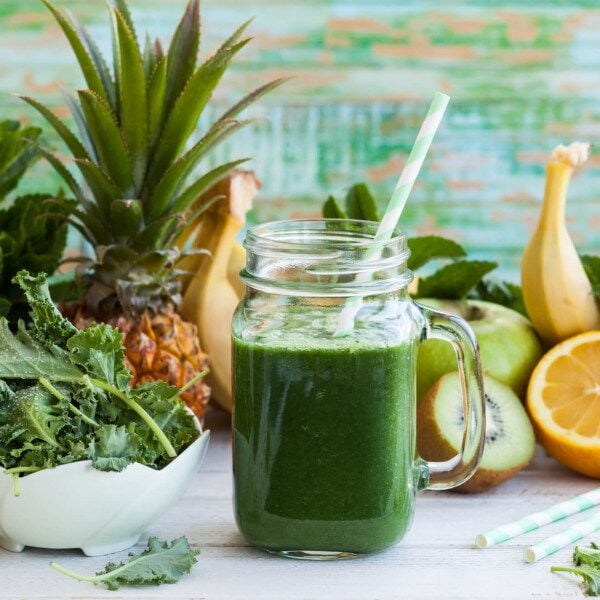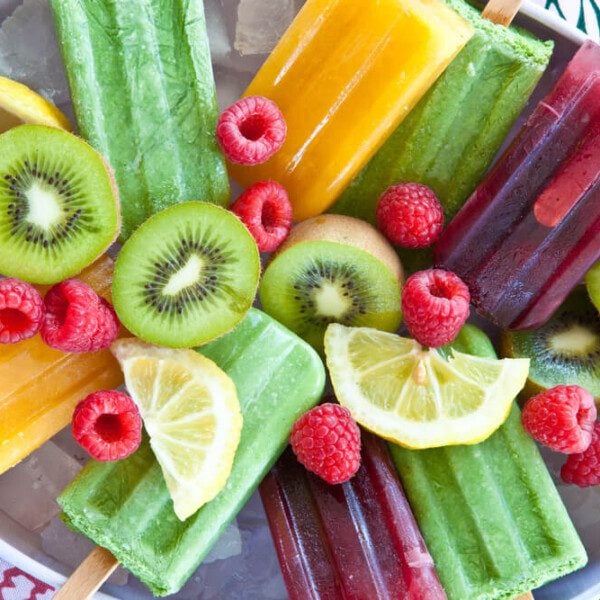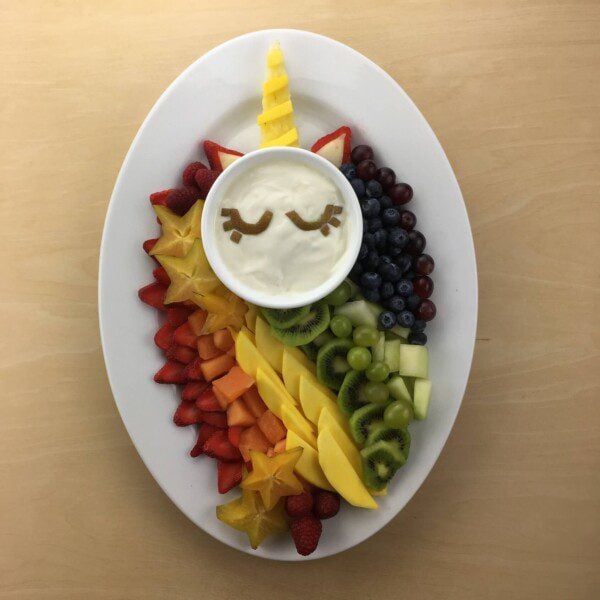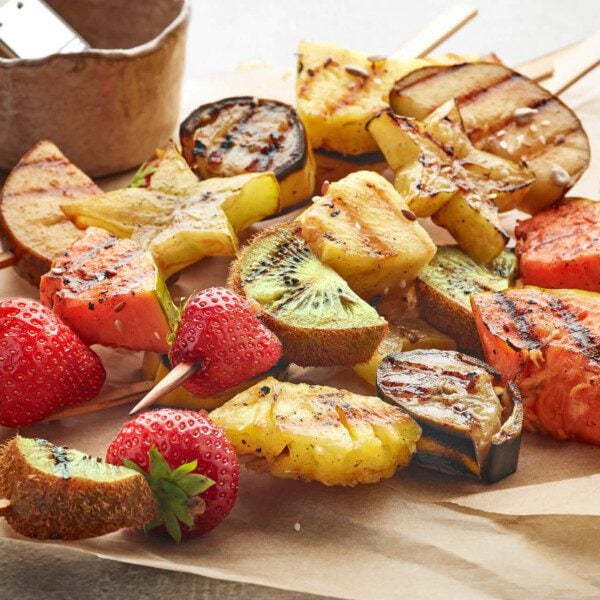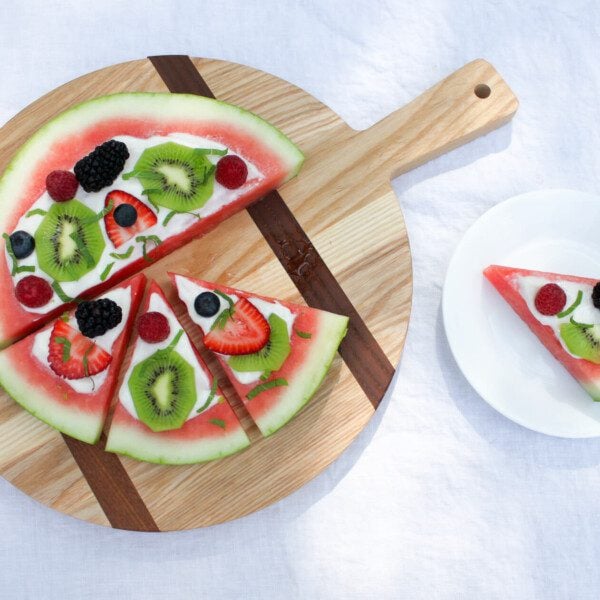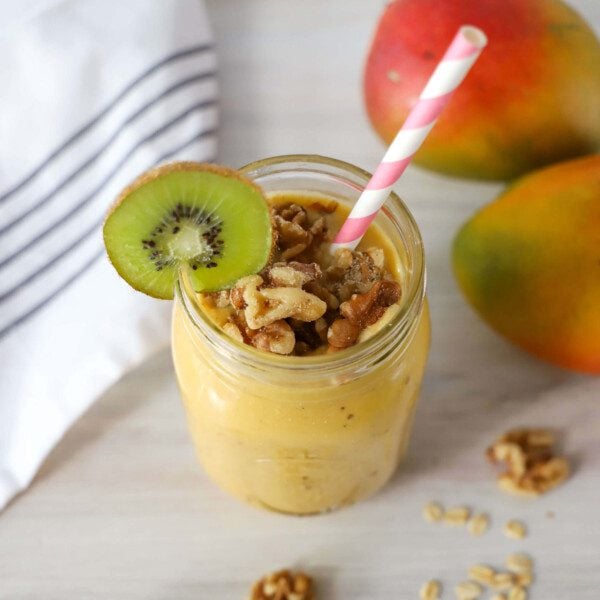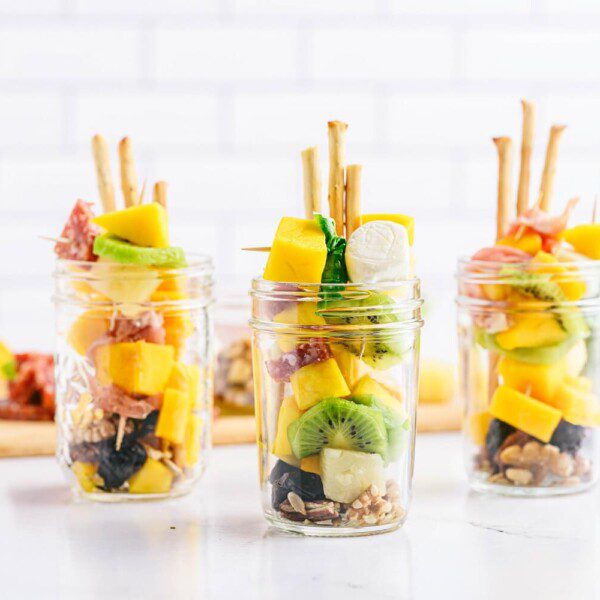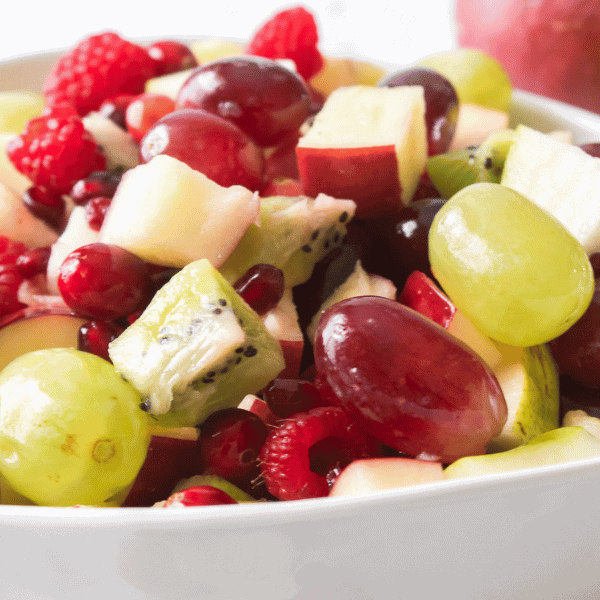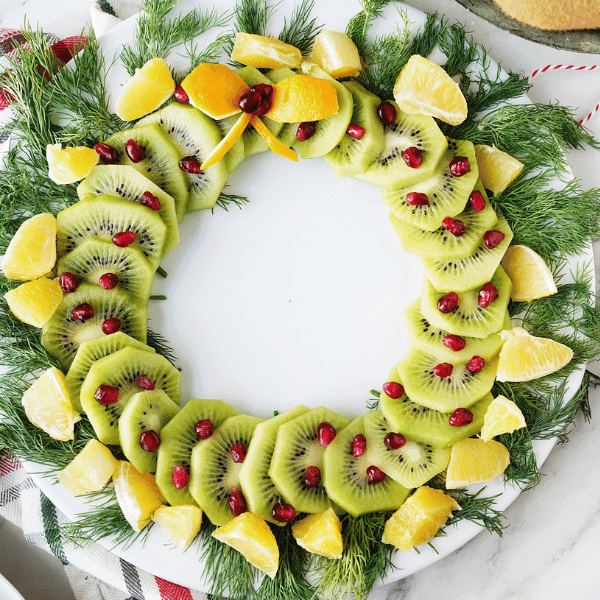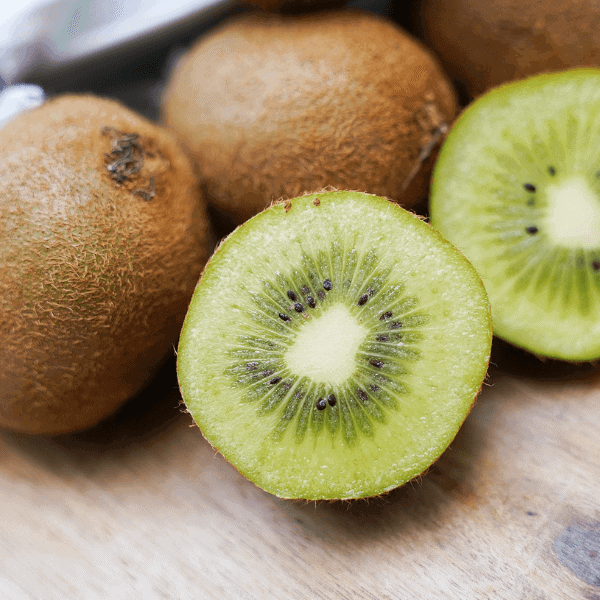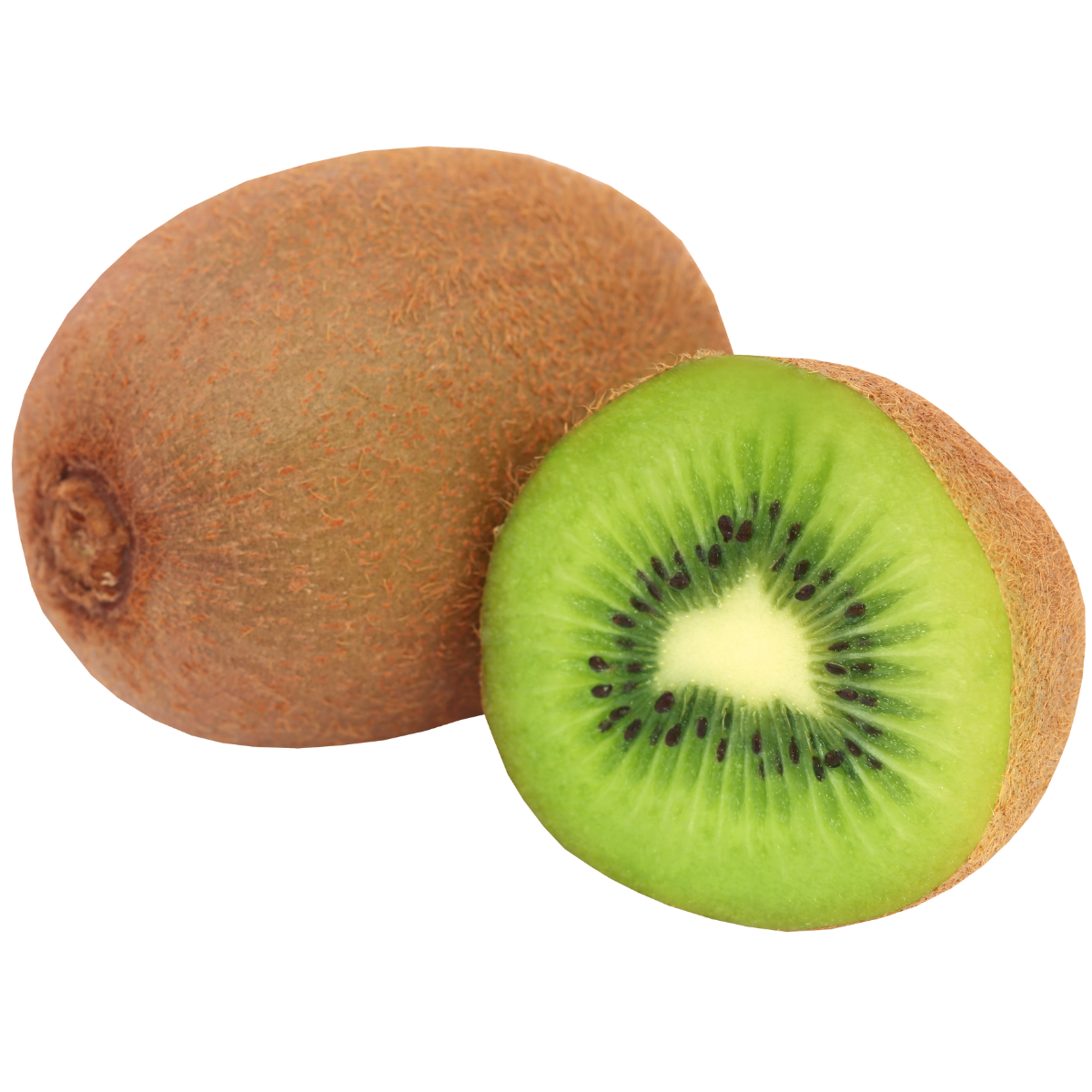
How to Select Kiwi
- Select kiwi fruits that are unblemished, plump, and fragrant with rough, fuzzy skin.
- Choose kiwi fruits that are slightly firm but have a little give when you gently squeeze them. Hard kiwi indicates that the fruit is unripe and unripe kiwi is sour. As kiwi softens and ripens, it becomes sweeter.
- Avoid kiwi fruits that are bruised, wrinkled, dimpled, or very soft.
When is Kiwi in Season?
The best season to eat kiwi is during the winter months, from November to February. This is when kiwis are at their peak freshness and flavor and are widely available in grocery stores. Kiwis are packed with nutrients, making them a healthy and delicious addition to your diet. Plus, its unique tarty and tangy flavor is sure to delight your family.
Varieties of Kiwi
Several varieties of regional and hybrid kiwi are grown in the United States. Here are the most popular varieties of kiwi you can find at the store:
- Hayward: This is the most common variety of kiwi and has a brown, fuzzy exterior. The flesh is bright green with small black seeds. It has a sweet and tangy flavor.
- Gold: This kiwi variety has smooth, bronze-colored skin and yellow flesh with small black seeds. It has a sweeter and milder flavor than Hayward kiwis.
- Saanichton 12: This is a relatively new variety of kiwi with a green, slightly fuzzy exterior. The flesh is green with no seeds and has a sweet, tropical flavor.
- Bruno: This kiwi variety has smooth, dark green skin and green flesh with small black seeds. It has a sweet and tangy flavor with hints of tropical fruit.
- Jintao: This is a Chinese variety of kiwi with smooth, light brown skin and green flesh with small, edible seeds. It has a sweet and slightly tangy flavor with hints of tropical fruit.
Kiwi Nutrition Facts & Benefits
Kiwis are also a good source of antioxidants and other micronutrients, such as copper and vitamin A. Here are the nutritional facts for one medium kiwi:
- Approx 42 calories
- 0.4 grams of fat
- 0.8 grams of protein
- 10.1 grams of carbohydrates
- 6.2 grams of natural sugar
- 2.1 grams of fiber
Kiwis are delicious and nutritious. Here are proven ways that kiwi can benefit your health:
- This little fruit contains nutrients that can lower your blood pressure if eaten regularly.
- Kiwis are a great source of fiber that can regulate blood sugar and support gut health.
- Kiwis are rich in carotenoids which can lower the risk of depression.
- Eating kiwis regularly can help protect against heart disease.
How to Store Kiwi
How To Store Fresh Kiwi: Store kiwi fruits on the counter at room temperature, away from sunlight. To slow down ripening, store kiwi in the refrigerator away from other fruits for two to three weeks. To speed up ripening, place kiwi in a brown paper bag with bananas, apples, or pears and store them on the counter for a few days.
How to Freeze Kiwi: Ripe kiwi fruit can be frozen whole, sliced, or crushed. To freeze sliced kiwi, place the fruit slices on a cookie sheet in a single layer and place them in the freezer. Once the slices are frozen through, transfer them to an airtight bag freezer bag and freeze for up to 12 months. Frozen kiwi is especially handy for smoothies.
How to Prepare Kiwi
Kiwi is a fun, unique tropical fruit that many kids love to eat. Here are four of the best ways to prepare kiwi:
- Raw: You can eat kiwis fresh by cutting the kiwi in half and scooping out the flesh with a spoon. They can also be sliced or chopped to be added to fruit salads, or served as a snack.
- Smoothies: Kiwis add a sweet and tangy flavor to smoothies. Peel and blend them with other fruits for a delicious and nutritious drink.
- Desserts: Kiwis can go in a variety of desserts, such as cakes, pies, and tarts. Follow the recipe instructions for how they want the kiwi prepared.
- Salsas: Add kiwi to fresh salsa. It pairs well with fish, chicken, or pork. Mix diced kiwi with your favorite salsa ingredients.
How to Serve Kiwi
Recipes
Hazelnut Fruit Salad
Recipes
Super Green Smoothie
Tutorials
How To Make Your Own Fruit Popsicles
Party Trays
Unicorn Fruit Tray
Recipes
Watermelon Pizza
Thanksgiving
Thanksgiving Food Art: Table Centerpiece Craft
Recipes
Mango Jarcuterie
Food Art
Butterfly Fruit Art
Appetizers
Ice Cream Cone Fruit Salad
How to
